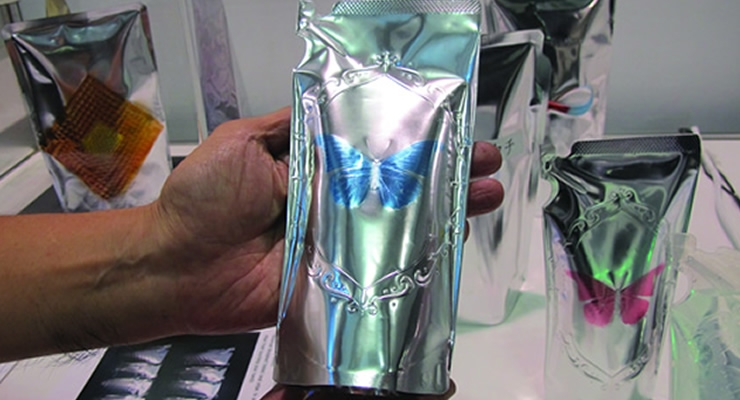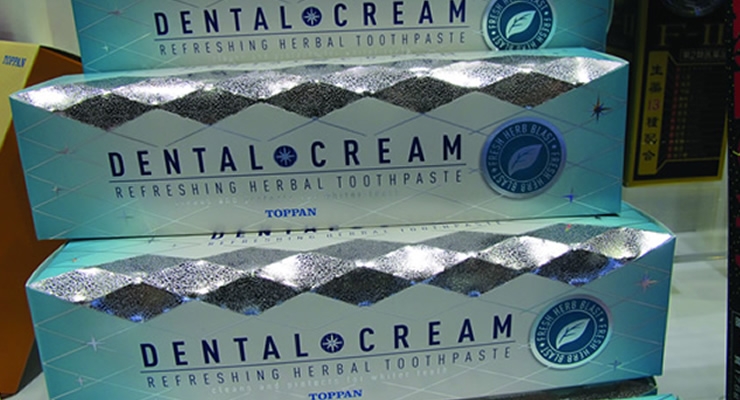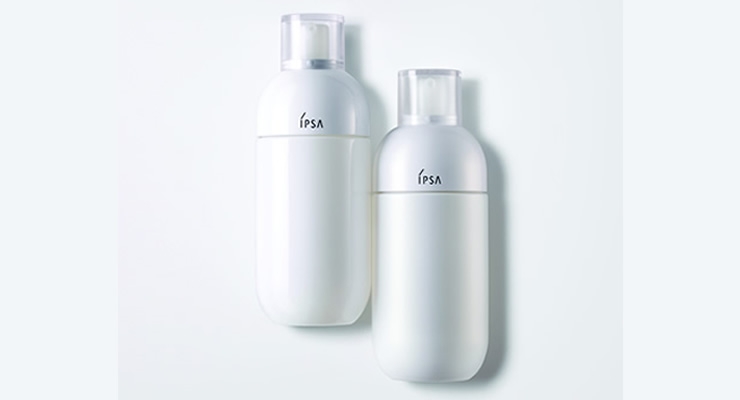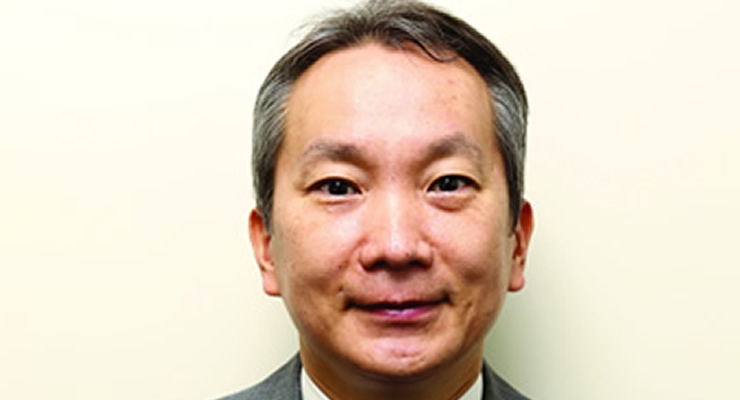Bobbie van der List, Correspondent09.05.16
Historically, Japanese people have always prioritized their personal hygiene, and take great pride in how they present themselves. Not surprisingly, the cosmetics, personal care and fragrance industry is thriving there. In a different way, but with similar enthusiasm, Japanese people are extremely sensitive to packaging. Combine these two elements and one can only make the logical conclusion that the personal care product packaging industry is “big in Japan.”
In order to get a better understanding of the latest trends in this huge industry, we interviewed two experts: Andrew Streeter (packaging expert in consumer products and working for CPS International) and Naoki Gomi Yoshida (marketing director at Cosmeworks, one of Japan’s largest cosmetic packaging companies).
van der List: What are the packaging trends for cosmetics, personal care and fragrance at the moment?
Streeter: Japan has an unusual set of packaging trends in cosmetics, personal care and fragrances driven by four factors. First, it [Japan] has a very strong set of packaging environmental laws, which the Japanese consumers are disciplined in implementing. Packs are becoming lighter, the pack weight to product weight ratio is steadily reducing, but there is more value-added to the pack. Weight reduction is part of the packaging environmental and sustainability drivers.
Second, the population is aging, so cosmetics are marketed to an elderly audience, which in turn needs more usage features that are consumer friendly. (…) there is more functionality generally, beauty packaging is becoming easier to open and easier to apply, which is a critical requirement for the seniors market. Both are achieved through structural design and innovative application.
I find Japanese pack design very lateral, or open in its thinking in getting to an effective result. One immediate benefit is cost reduction (i.e., less material weight) while creating more value through pack features design.
Third, there is Kaizen, the Japanese desire for constant improvement.
And fourth, is the demographics. The population can be judged to be declining, with a TFRI (Total Fertility Rate) of 1.42 where the replacement rate is judged to be 2.1 TFR. Nationally the market is shrinking overall with less new entrants in beauty, but it is growing in the 50+ sector.
There is no leeway on quality in these moves. Perceived high quality is a given, but I suggest the Japanese consumer packaging recyclability motivated and appreciates format change where there is perceived overt weight or packaging saving, or simplicity change. One beneficiary of this is flexible packaging, especially the pouch. This is making inroads as a credible refill option, a concept in this market unthinkable not so many years ago.
Yoshida: The trends that we are seeing consist of the following four areas. First, refillable technologies, most notably in the form of luxury créme jar components. Second, diversity in single package platforms: items that can be used or interchanged for other formulas; powder & créme, it saves on and is an efficient tooling investment. Mobility: more on the go powder components. As the world’s leader in airtight technologies, we hold many patents for airtight compact packaging. Using this as our axis for development, we see the industry’s increased need for airtight components for formulas in both makeup and skin care. We are seeing trends lead towards advanced formulas that are sensitive to exposure to light and air, which allows us to continue to drive the wheel of airtight innovative technologies in cosmetic packaging.
van der List: What type of structures, materials, applicators, decoration and environmentally friendly packaging materials are being used?
Yoshida: Structurally, we are seeing demand for thin-walled designs and, functionally, we are seeing clients considering more emphasis on safety and quality rather than attempting to achieve the most impossible design. Materially speaking, we lead in the use of recyclable resins, and investments in recycling supply infrastructure. The most safe and stable material in this regard has been PET. A fun material we are playing with now is polylactic acid and the research and exploration of biodegradable resins.
Streeter: What is coming through is the growth of rigid PET containers and stretch-blow PET bottles and PET bottles increasingly being used for trigger spray packs and sometimes aerosols replacing aluminium structures. Heavy base PET containers, pots and jars led in Japan as alternatives to glass, and this has continued. Now what was once mixed materials as in ridged containers, can often be all mono-material injection molded, often in polypropylene. Facial compacts are a good example of this. But the two big forces driving change are surface decoration and the expanding applications of pouches.
van der List: What type of products and packaging are most widely used at the moment?
Yoshida: Up until now, foundation cases were predominantly square presses, yet we are noticing attempts for diversity and packaging with more functional features. Within the Japanese market, we notice the Japanese brands prefer simplicity in the shape and design rather than gimmicky type packaging aesthetics.
van der List: What are the most noteworthy packaging innovations?
Yoshida: We believe a game changer for the beauty industry will be replacing commonly used glass components with super heavy-walled plastic bottles, using our innovative ability to customize and control the inner body shape of the blown bottle. Furthermore we are offering innovative applicator tip heads in the tube commodity arena.
Streeter: I would like to expand that question by looking to the future and share the thought that pouches will extend their tactile features by embossing (a technical breakthrough) and then make them more pleasing to hold by folding over the sides, removing the hard cut edge and creating a softer rounded edge. When that point is reached then I believe it is possible to see pouches extend into mainstream beauty especially where the product is a cream or viscous liquid base. It’s generic, not specific to beauty, but certainly can be adapted to match beauty market needs. Backing up that comment is the fact that Toppan (a very large Japanese packaging manufacturer) is now implementing a $264 million investment in flexible packaging, and some competitors are doing likewise.
The photo of the toothpaste carton is about glamour first and moves the market into a more added value arena. It also does not use any more board than a normal toothpaste carton. As I said earlier on, it fulfils environmental, value-add, simplicity, Kaizen and that hidden factor that packaging can manipulate minds, critical in beauty packaging.
About the Author:
Bobbie van der List works as a freelance correspondent in Tokyo. He covers general news, but also closely follows the packaging industry.
In order to get a better understanding of the latest trends in this huge industry, we interviewed two experts: Andrew Streeter (packaging expert in consumer products and working for CPS International) and Naoki Gomi Yoshida (marketing director at Cosmeworks, one of Japan’s largest cosmetic packaging companies).
van der List: What are the packaging trends for cosmetics, personal care and fragrance at the moment?
Streeter: Japan has an unusual set of packaging trends in cosmetics, personal care and fragrances driven by four factors. First, it [Japan] has a very strong set of packaging environmental laws, which the Japanese consumers are disciplined in implementing. Packs are becoming lighter, the pack weight to product weight ratio is steadily reducing, but there is more value-added to the pack. Weight reduction is part of the packaging environmental and sustainability drivers.
Second, the population is aging, so cosmetics are marketed to an elderly audience, which in turn needs more usage features that are consumer friendly. (…) there is more functionality generally, beauty packaging is becoming easier to open and easier to apply, which is a critical requirement for the seniors market. Both are achieved through structural design and innovative application.
I find Japanese pack design very lateral, or open in its thinking in getting to an effective result. One immediate benefit is cost reduction (i.e., less material weight) while creating more value through pack features design.
Third, there is Kaizen, the Japanese desire for constant improvement.
And fourth, is the demographics. The population can be judged to be declining, with a TFRI (Total Fertility Rate) of 1.42 where the replacement rate is judged to be 2.1 TFR. Nationally the market is shrinking overall with less new entrants in beauty, but it is growing in the 50+ sector.
There is no leeway on quality in these moves. Perceived high quality is a given, but I suggest the Japanese consumer packaging recyclability motivated and appreciates format change where there is perceived overt weight or packaging saving, or simplicity change. One beneficiary of this is flexible packaging, especially the pouch. This is making inroads as a credible refill option, a concept in this market unthinkable not so many years ago.
Yoshida: The trends that we are seeing consist of the following four areas. First, refillable technologies, most notably in the form of luxury créme jar components. Second, diversity in single package platforms: items that can be used or interchanged for other formulas; powder & créme, it saves on and is an efficient tooling investment. Mobility: more on the go powder components. As the world’s leader in airtight technologies, we hold many patents for airtight compact packaging. Using this as our axis for development, we see the industry’s increased need for airtight components for formulas in both makeup and skin care. We are seeing trends lead towards advanced formulas that are sensitive to exposure to light and air, which allows us to continue to drive the wheel of airtight innovative technologies in cosmetic packaging.
van der List: What type of structures, materials, applicators, decoration and environmentally friendly packaging materials are being used?
Yoshida: Structurally, we are seeing demand for thin-walled designs and, functionally, we are seeing clients considering more emphasis on safety and quality rather than attempting to achieve the most impossible design. Materially speaking, we lead in the use of recyclable resins, and investments in recycling supply infrastructure. The most safe and stable material in this regard has been PET. A fun material we are playing with now is polylactic acid and the research and exploration of biodegradable resins.
Streeter: What is coming through is the growth of rigid PET containers and stretch-blow PET bottles and PET bottles increasingly being used for trigger spray packs and sometimes aerosols replacing aluminium structures. Heavy base PET containers, pots and jars led in Japan as alternatives to glass, and this has continued. Now what was once mixed materials as in ridged containers, can often be all mono-material injection molded, often in polypropylene. Facial compacts are a good example of this. But the two big forces driving change are surface decoration and the expanding applications of pouches.
van der List: What type of products and packaging are most widely used at the moment?
Yoshida: Up until now, foundation cases were predominantly square presses, yet we are noticing attempts for diversity and packaging with more functional features. Within the Japanese market, we notice the Japanese brands prefer simplicity in the shape and design rather than gimmicky type packaging aesthetics.
van der List: What are the most noteworthy packaging innovations?
Yoshida: We believe a game changer for the beauty industry will be replacing commonly used glass components with super heavy-walled plastic bottles, using our innovative ability to customize and control the inner body shape of the blown bottle. Furthermore we are offering innovative applicator tip heads in the tube commodity arena.
Streeter: I would like to expand that question by looking to the future and share the thought that pouches will extend their tactile features by embossing (a technical breakthrough) and then make them more pleasing to hold by folding over the sides, removing the hard cut edge and creating a softer rounded edge. When that point is reached then I believe it is possible to see pouches extend into mainstream beauty especially where the product is a cream or viscous liquid base. It’s generic, not specific to beauty, but certainly can be adapted to match beauty market needs. Backing up that comment is the fact that Toppan (a very large Japanese packaging manufacturer) is now implementing a $264 million investment in flexible packaging, and some competitors are doing likewise.
The photo of the toothpaste carton is about glamour first and moves the market into a more added value arena. It also does not use any more board than a normal toothpaste carton. As I said earlier on, it fulfils environmental, value-add, simplicity, Kaizen and that hidden factor that packaging can manipulate minds, critical in beauty packaging.
About the Author:
Bobbie van der List works as a freelance correspondent in Tokyo. He covers general news, but also closely follows the packaging industry.



















